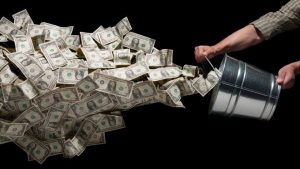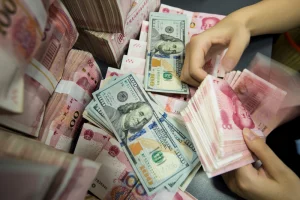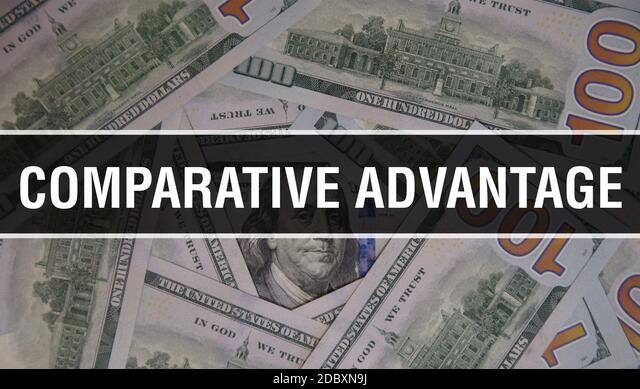How the dollar became the world currency and why de-dollarization is needed
Until recently, the US dollar (USD) was out of competition in terms of the share of participation in international transactions and the volume in the foreign exchange reserves of different countries. Now the role of the American monetary unit in the world economy is still great, but not so unshakable.
Countries against which the US government has imposed economic sanctions (Iran, Afghanistan, Venezuela), members of the EAEU, BRICS are increasingly using the euro (EUR), yuan (CNY), ruble (RUB) and local currencies for mutual settlements.
What is a world currency
The list of world currencies is approved by the IMF (International Monetary Fund). Currently, the US dollar, euro, pound sterling (GBP), Swiss franc (CHF), Japanese yen (JPY), Chinese yuan have this status.
How the US dollar became the world’s currency
To understand why the dollar became the main world currency, let’s look at the history of the 20th century.
At the beginning of the last century, the American budget was in a rather deplorable state – in 1913, the external public debt of the United States amounted to more than $5 billion.
This did not prevent the country’s government from lending about $2 billion to its participants in the 3 years since the start of the First World War (hereinafter – WWI), while most of these funds went to the purchase of military equipment from the States themselves.
After entering the war in 1917, America continued to lend to the allies and replenish its budget through the sale of weapons. By the end of hostilities (November 11, 1918), the total debt of European states to the United States exceeded $10 billion.

WWI ended, it was time to pay off debts, and not all countries coped with their obligations. In the spring of 1922, the participants of the Genoa Conference (the RSFSR, Italy, Great Britain, France, Germany and the United States as an observer) came to a compromise: the repayment of debts should be carried out over several decades at the expense of German reparation payments.
In 1923, monthly inflation in Germany, which had first been heavily spent during WWI but was now reimbursing the victims, reached 3.2 million percent. Germany received a loan of $ 200 million – this further strengthened the position of the American currency in the global financial system.
During World War II, part of the evacuated gold reserves of Norway fell into the hands of the United States, and in January 1943, American vaults were replenished with Polish, Belgian, Dutch and French gold, recaptured by the Allied forces from the Germans.
Since the fighting was not carried out on the territory of the States, America flourished against the backdrop of European devastation. The USD was fully backed by gold, meaning that banknotes could easily be exchanged for metal. Many countries began to form reserves in the American currency, as the most reliable and stable in the world.
Officially, the position of the US dollar as the world’s reserve currency was fixed at the Monetary and Financial Conference of the United Nations in 1944. This event can rightly be considered one of the most important for the formation of the modern economy.
In addition, the participating countries approved the Bretton Woods monetary system, which was based on equating the USD to gold and limiting the issue of money within the limits of their own gold and foreign exchange reserves. A fixed rate of $35 per troy ounce of the precious metal was set.
The current position of the dollar in the world monetary and financial system
In the sixties of the last century, Germany and France wished to exchange some of the free American bills for gold with the United States. It took the states as much as 2 years to give the Europeans about three thousand tons of precious metal. This gave rise to rumors that the “world banker” is issuing much more currency than he has gold in his vaults.
America spent huge amounts of money on the war in Vietnam and the struggle with the USSR for leadership in armament and space exploration. This quickly led to a significant increase in public debt.
To achieve their goals, the States issued dollars uncontrollably, so by the time the creditors began to demand the gold due to them, the American currency had fallen in price so much that the valuable metal could leak from the treasury, literally like sand through fingers.

To prevent the final collapse of the economy, US President Richard Nixon announced the rejection of the Bretton Woods agreement. The rationale was the growth of global financial activity, for which the available gold was not enough.
In 1976, developed countries adopted the Jamaican monetary system, according to which exchange rates are set not by states, but by the market. The new rules of the game have freed the hands of the Fed (Federal Reserve System – the US central bank) – now it can print as many dollars as it needs.
As of February 2022, the share of the US dollar in transnational payment transactions was 38.85%, followed by the euro (37.79%). The pound sterling completes the top three with a share of 6.76% (source: TASS).
Why USD is still the preferred currency
Despite the fact that America’s public debt exceeded $30 trillion at the beginning of the year, the US dollar continues to hold its positions in the global financial arena. This is due to several reasons:
the choice of the American currency for external settlements is a habit that has evolved over half a century;
the economies of countries whose gold and foreign exchange reserves contain a lot of American currency are highly dependent on the stability of the dollar;
in exchange for US military protection from neighboring countries, the UAE agreed to sell oil only for USD (the countries entered into an alliance on a number of issues in 1974);
despite the fact that the dollar has not been backed by gold for a long time, it still seems to be the most reliable option, as the currency of a superpower with one of the strongest economies;
banknotes with portraits of American presidents have a high degree of protection, it is very difficult to counterfeit them.
